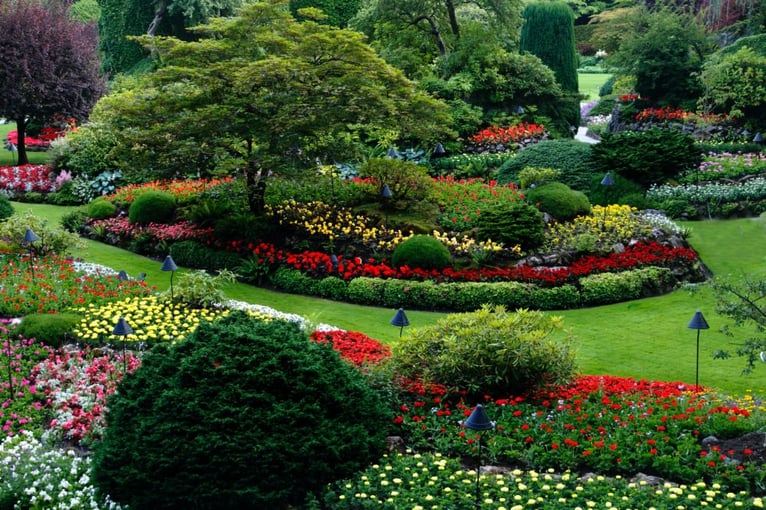
Understanding Plant Growth Regulators
 Michael Tomaino
Michael Tomaino
Plant Growth Regulators: What They Are & How They Enhance Your Landscape
You’ve probably heard of genetically modified plants, primarily in the context of agriculture. Whether you’ve watched a documentary detailing how you’ll grow extra toes if you eat genetically modified plants, or you’re just excited about bigger strawberries, the world of genetically modified plants is magical and mysterious.
Believe it or not, the plants around your property can have their growth altered in a similar manner through the use of plant growth regulators.
Check out our brief guide below to what plant growth regulators are, how they work, and how they can be used to enhance your landscape.

What are Plant Growth Regulators?
Before you are overcome with concerns about chemicals and lab experiments taking over your landscape, let us clear the air—plant growth regulators are naturally occurring chemicals that are produced by the plants themselves.
These chemicals are typically divided into two primary categories—inhibitors and promoters. Based on the classification of the plant growth regulator, you can gain a basic idea of how it will influence the development of a particular plant.
Already, you can begin to see how the proper use of plant growth regulators could be beneficial in landscaping. Before you allow your imagination to run wild, though, let’s take a look at the most common applications of plant growth regulators in landscaping today.
How Plant Growth Regulators are Used
The agricultural world began using plant growth regulators in the 1930s, and the prevalence of such practices has grown by leaps and bounds since then. Some of these techniques have since trickled down to everyday landscaping, creating unique opportunities for commercial and residential properties alike.
While the applications of plant growth regulators continue to advance and evolve, there are a few common uses, including those below!

Slower Growth
It seems every property owner in America has a similar complaint—the frequency with which they have to mow their lawn. The shared frustration (or overused conversation starter) may sound like a minor, one-dimensional inconvenience, but it’s actually so much more.
Frequent mowing is time-consuming, but it also carries a host of other consequences. It is expensive, especially if you have a large property to maintain. This expense can eat into your budget or lead you to cut some important corners in an effort to save money. Both options are unideal.
The equipment used to mow will suffer wear and tear that can lead to costly maintenance and repairs. The fuel used to power the mowers is an additional cost that further adds to the total. Even the carbon impact of frequent mowing could be considered as a negative factor.
Many of these same issues apply to other ground cover and shrubs. Pruning is an involved and time-intensive practice that requires frequent attention to maintain proper plant health and a positive curb appeal.
Plant growth regulators can slow the growth of your lawn, ground cover, and shrubs, thereby reducing the frequency with which you have to mow and maintain. This helps mitigate all of the negative factors above, saving you time, money, and even environmental concern!
Enhanced Appearances
Have you ever looked at the bushes framing your walkway and wished they were bushier and fuller in appearance? What about the flowers that line the front of your building and never seem to bloom enough?
Plant growth regulators can help by promoting the growth you’re looking for. There are options available that can stimulate increased flower production, fuller branches, and more. In other words, those areas of your landscape that seem lacking or underproductive can be given a gentle push toward a more enhanced appearance.
While this is great for your personal pleasure—who doesn’t love good-looking landscapes—it is also beneficial for the value of your property. Curb appeal matters. It can improve perceptions of your home, attract attention to your business, and even draw in more customers. So, if you want to take your property to the next level, plant growth regulators may be able to help!
The application of plant growth regulators can’t be done in a haphazard manner if you want them to perform as intended. The method, timing, and more must be done in specific ways in order for the plants to thrive.
That’s why we recommend working with a professional for your plant growth regulator needs. They can provide insight into which will benefit the plants on your property, apply them in the proper way, and ensure that everything is going according to plan afterward.
Landcrafters has been promoting healthier, better-looking landscapes for over 20 years. If you want more information about plant growth regulators or would like a consult, simply call us at 727-201-3947 or contact us via our website. In the meantime, you can learn more valuable landscaping tips and tricks by visiting our free blog!

Michael Tomaino
Head Gardener for Landcrafters, Inc. Michael Tomaino, a cornerstone of Landcrafters since its inception, oversees all aspects of business operations with a wealth of experience. With years of adept team management and leadership under his belt, coupled with a robust educational background, both within and beyond the industry, Michael is dedicated to steering Landcrafters towards becoming the foremost landscape management provider in the Tampa Bay Area.
